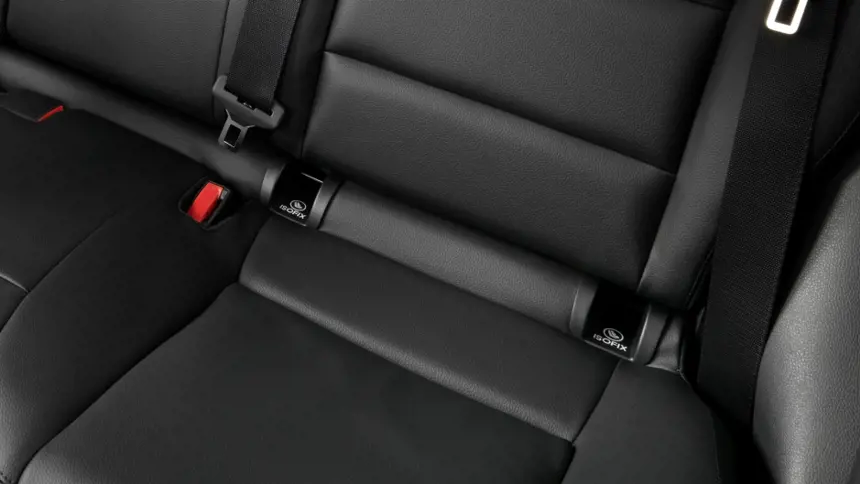What is Isofix?
Need a car that's prepared for a family? Getting one equipped with Isofix will help you to make sure the children are as safe as possible

Have you suddenly had your car buying priorities hijacked by the impending arrival of children? Scrub out those plans for an exciting two-seater sports car, and replace them with a sensible family car that's equipped with Isofix.
The Isofix system is currently the most convenient way of fitting a child seat into your car. The system itself can be described as small metal hoops built directly into the main structure of the car. Compatible car seats can then be clipped onto those hoops for a secure and simple attachment.
It’s a major improvement over the alternative, which involves using the car’s seatbelts to attach a car seat. Not only does this take longer, it's often difficult to tell whether the belt has been securely fastened. Using Isofix should help to remove any element of doubt in the safety of your children.
Most cars sold since 2006 have been equipped with Isofix, and in 2014 it became a legal requirement in Europe for all four-seater cars to be fitted with at least two Isofix points (except for two-seater cars).
Is Isofix safer?

The main safety benefit with Isofix is that the child seat is far more likely to be fitted properly. Widely-used research carried out by Britax, a car seat manufacturer which co-developed the Isofix system, found that just 30% of child seats attached with a seatbelt were fitted correctly, compared with 96% of those using the Isofix system.
It's unsurprising really. The simplicity of clipping a compatible seat into an Isofix point is a far cry from the struggles of trying to correctly tension a seatbelt around the back of a bulky child seat. Most Isofix points have clear green and red indicators to help you see clearly whether the seat is secure or not.
Despite the difference in convenience, a child seat fixed with Isofix or with a seatbelt will both provide high levels of safety for children as long as they are fitted correctly. Both methods comply with European safety standards, and you shouldn't feel uneasy about using seatbelts if that's all you have available.
How does Isofix work?
The key part of the Isofix system are the two metal hoops, incorporated into the vehicle’s main structure or chassis, which can be found in the gap between the car seat back and cushion. Sometimes these are open, just behind the gap opening, but many manufacturers put them in a plastic housing with a lid that can be flipped open or removed.
There’s also a top tether behind the car seat, either at the rear of the seat back or on the floor.
Isofix child seats simply clip onto the metal hoops, which are a standard 28cm apart in every car. The hoops hold the seat securely in place, but some seats also require extra support. If so, they either have a strap, which runs behind the car seat and clips to the top tether; or a foot, which extends into the foot well and rests on the floor of the car.
Child seats that use a support foot can’t be placed over under floor storage compartments, as the force of a crash could crack the lid and cause the seat to dangerously tip.
Isofix seats for babies and young children are often made up of two parts: the seat and a base. The base clicks into a car’s isofix mounts, and the seat is then fixed to the base - usually by clips within the base. This system makes it easier to remove the whole seat, when you don’t want to disturb a sleeping baby, for example.
Does my car have Isofix?

All new cars sold in Europe since 2014 must have at least two sets of Isofix points (assuming they more than have two seats). However, the system has been fitted to the vast majority of cars since 2006, so it's worth checking if you have a car that's older than 2014, and you might be pleasantly surprised by what you find.
But it's not just the car that you have to consider. It's worth insuring a child seat is also compatible with Isofix before you make a purchase, as well as making sure the seat itself will fit inside - a big seat might not fit in a small city car.
There are plenty of cars available with more than two Isofix points if you find your car regularly resembles a school bus. This number can be as many as six in some cases, but the size of your child seats will also be a consideration here, because three bulky seats are unlikely to sit side by side even in larger cars.
In some cases, manufacturers can retrofit Isofix points to certain older cars that didn’t have them as standard. Given how critical this is to safety, it’s advised that this is done through an official dealership.
Is Isofix a legal requirement?
Child seat manufacturers are not currently required to include Isofix mounts with their seats, and so you can buy several that are fitted with seatbelts. Both types of seats must pass official safety tests.
New legislation, currently being introduced, will eventually outlaw the sale of new, non-Isofix child seats. Called i-Size, this regulation will require tougher crash tests and Isofix mounts. You can already find i-Size seats in shops and these will soon become the only type of child seats that you can buy.
European regulators have said that seatbelt-fitted child seats will remain legal to use even after they have been banned from sale.
